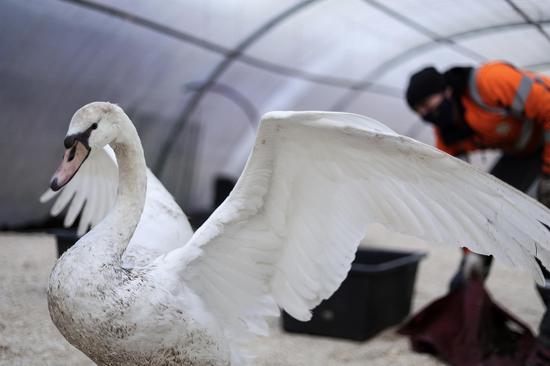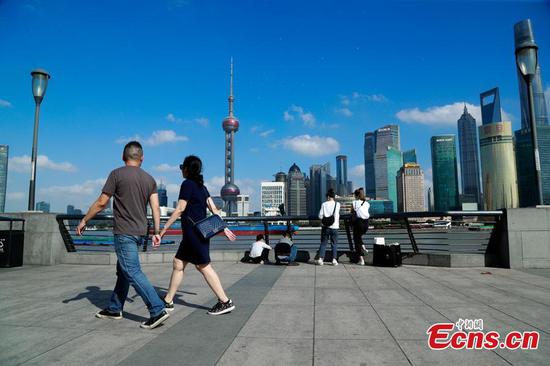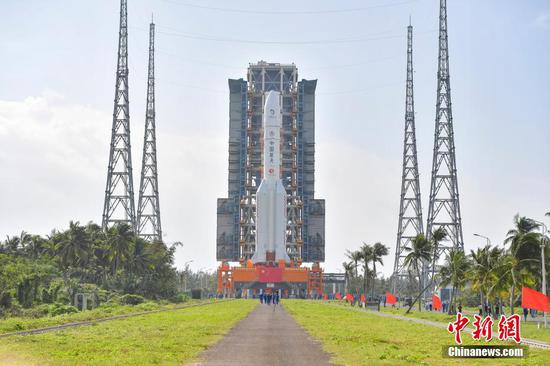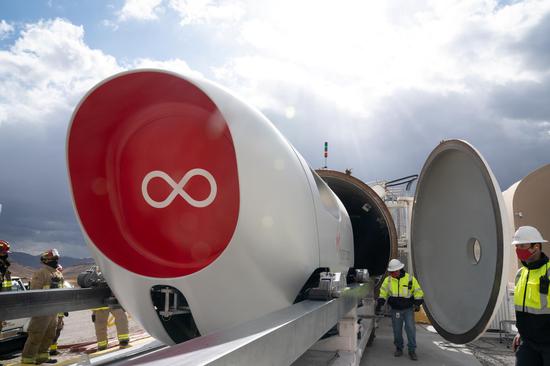
Residents line up to take nucleic acid tests in the Binhai New Area in Tianjin over the weekend, following confirmation of new COVID-19 cases in the city on Friday. (ZHAO ZISHUO/XINHUA)
Cross-border logistics and cold chains will be a focal point in preventing a rebound of the COVID-19 pandemic in China this winter, experts said after some of the scattering of recent cases reported in several cities were related to those matters.
While maintaining strict procedures to prevent the virus' spread from imported cases, cities should also rigorously implement prevention and control measures in logistics and cold chains to maintain the hard-won control over the pandemic, said Li Bin, deputy director of the National Health Commission.
"The source of infection in the recent local cases was all from overseas, according to nucleic acid test results and gene sequencing results," he said.
Wu Zunyou, chief epidemiologist at the Chinese Center for Disease Control and Prevention, said prevention and control of the contagion becomes significantly more difficult in winter as the pandemic escalates overseas and when non-cold-chain imported cargo becomes a virus transmission vector.
The entire environment of international freight in winter is like the cold chain in summer. The virus can survive longer on the surface of containers and product packaging, which increases the risk of people becoming infected, news portal Jiemian quoted Wu as saying.
Non-cold-chain imported goods must also be subject to cold-chain management standards, and product sampling and testing, as well as regular worker screening for the virus, must be adhered to, he said.
The five people reported infected from Friday to Sunday were three workers at a cargo station at Shanghai Pudong International Airport and the wives of two of them.
In Tianjin's Binhai New Area, massive nucleic acid testing began on Saturday, and 2.24 million people had been tested by 7 pm Sunday. This followed a report of multiple local infections this month. Two men, both cargo workers at a frozen food company, were confirmed as having COVID-19 on Nov 8 and on Tuesday. Four residents of the Kanhaixuan residential community in Binhai followed on Friday.
On Saturday, two COVID-19 cases, a man and his wife, both 55, were reported in Manzhouli, Inner Mongolia autonomous region. They tested positive when the husband planned to be hospitalized for lower back pain.
The city said it will complete citywide nucleic acid tests of residents by Wednesday. Public venues in Manzhouli have been shut down and schools suspended.
The Dongguan (Guangdong province) Disease Control and Prevention Center reported that the outer packaging of a chicken wing product from Argentina and a chicken feet product from Russia tested positive for the novel coronavirus on Saturday during regular monitoring of imported cold-chain food products.
By the end of Saturday, the Kanhaixuan residential community in Tianjin was China's only high-risk area for COVID-19, and nine communities or subdistricts in Shanghai, Tianjin, Manzhouli and Fuyang, Anhui province, were categorized as medium-risk regions.


















































